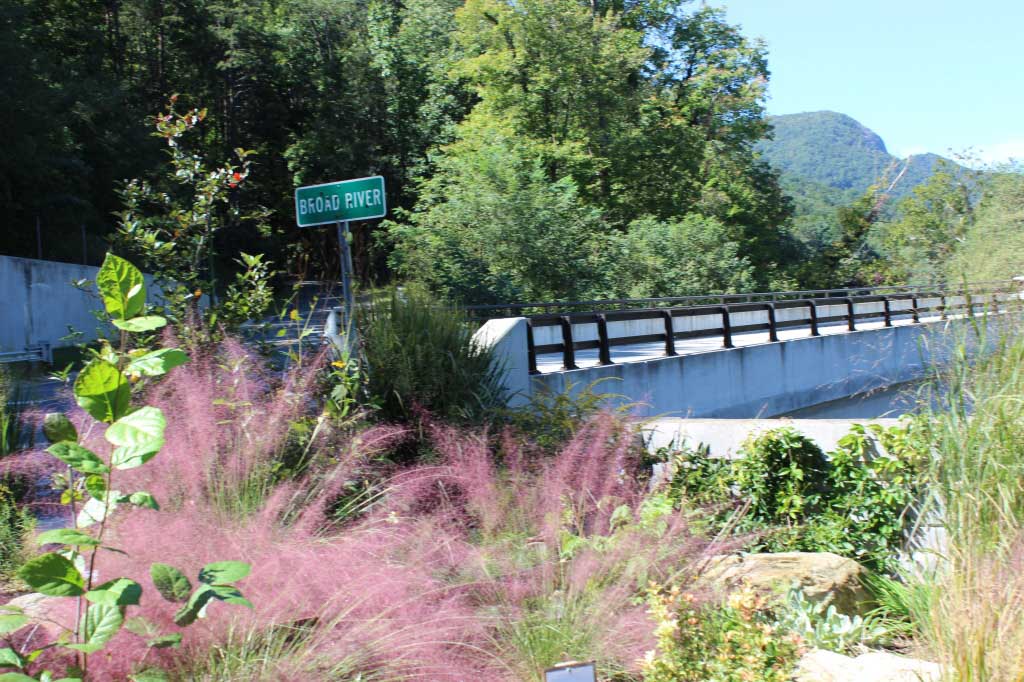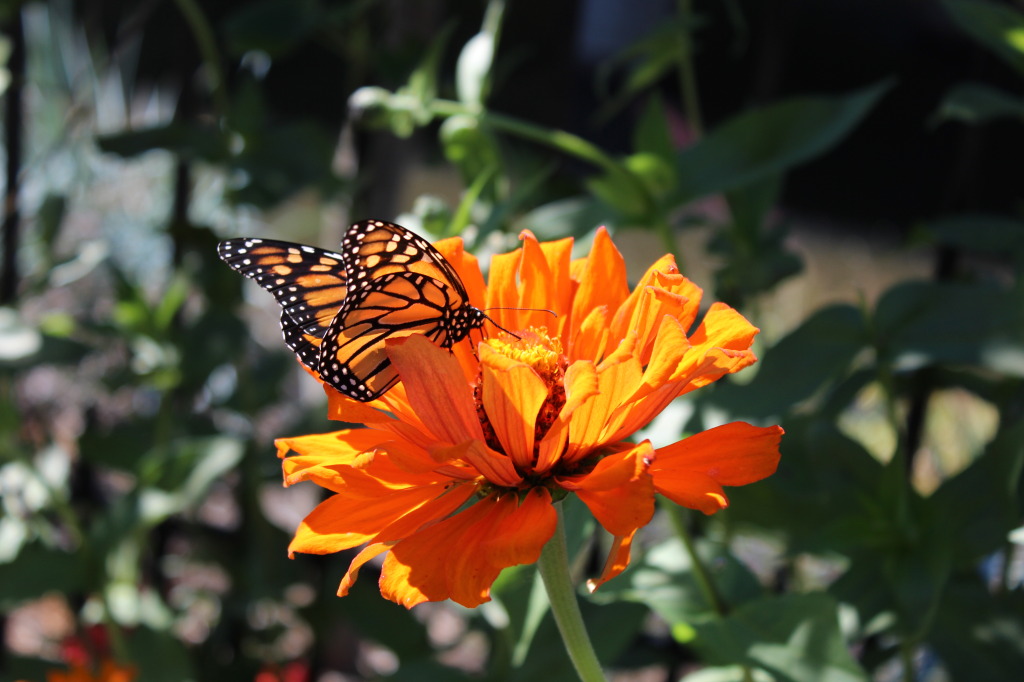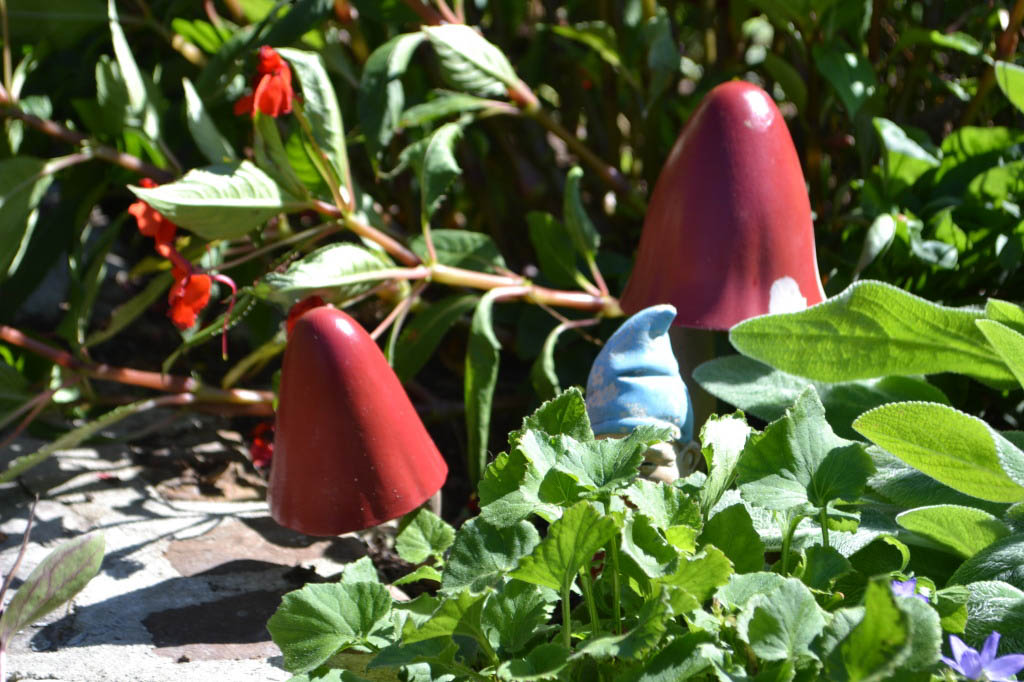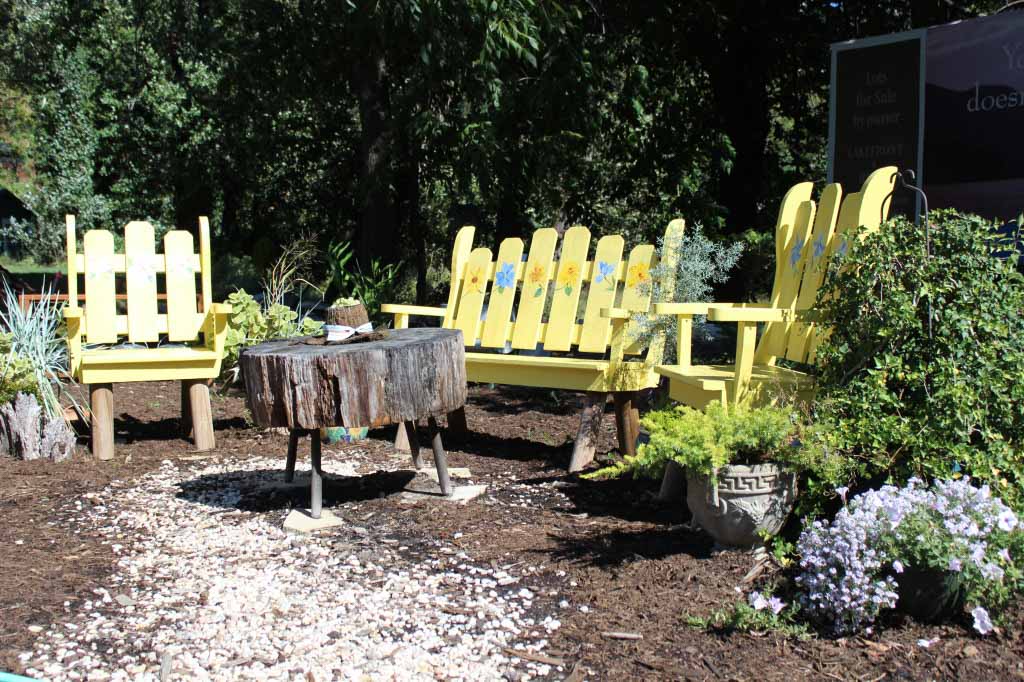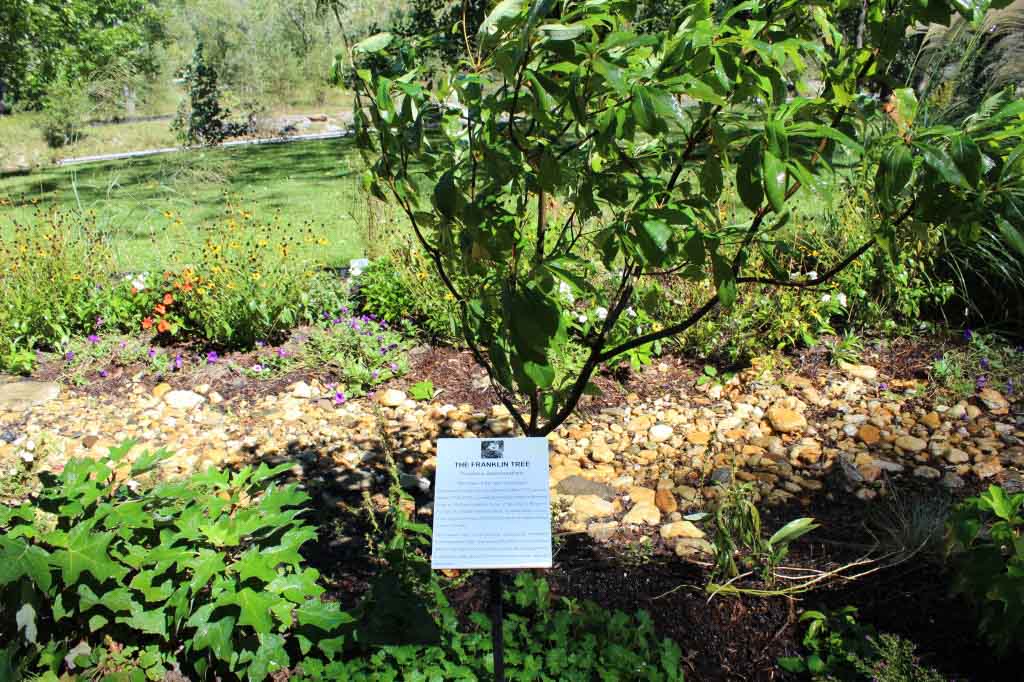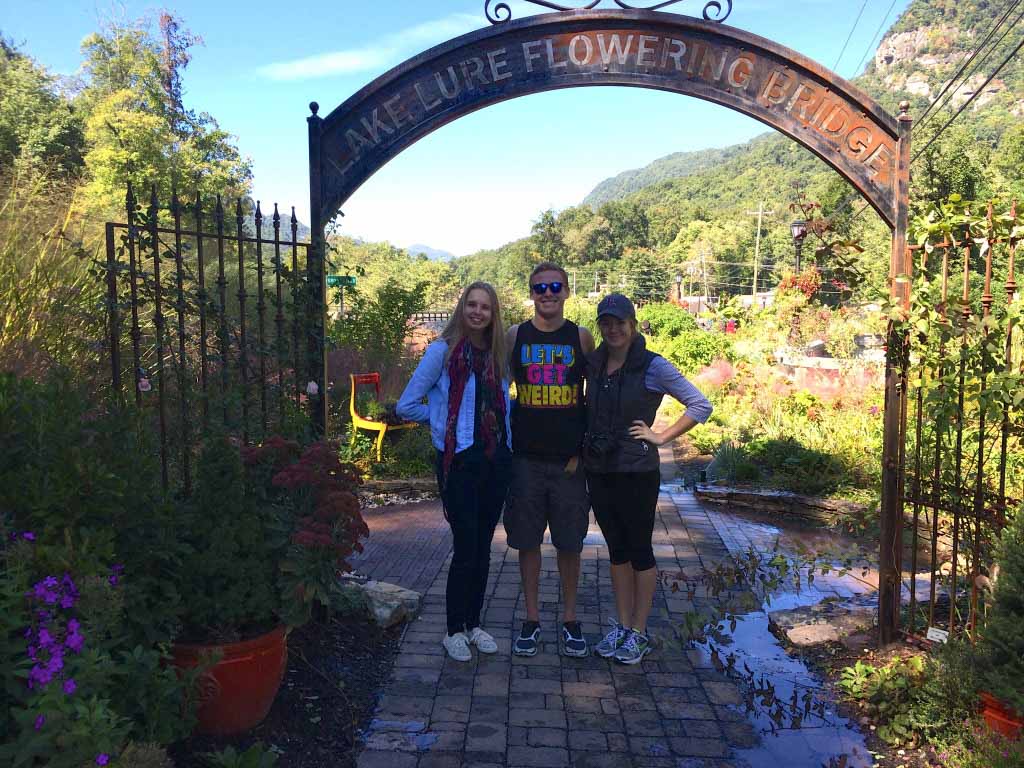By Gina Apperson – 2014
There’s a certain beauty and mystery associated with bridges. When crossing them, we often don’t know what lies on the other side. As emblems of travel, bridges are quintessential parts of any journey, helping us reach our destination quicker and easier. But one bridge in the community of Lake Lure, North Carolina, encourages us to rest and realize that the joy is in the journey itself.
Crossing the Rocky Broad River that runs along Highway 64, the Lake Lure Flowering Bridge, a community pedestrian bridge, brings to life the history, community and natural beauty of the Hickory Nut Gorge in western North Carolina.
When the historic 1925 bridge closed to traffic in 2011, it was a childhood memory of Lake Lure resident, Bill Miller, that inspired the idea to transform the bridge into a community garden. After traveling to the Bridge of Flowers in Shelburne Falls, Massachusetts, Miller continued to envision the Massachusetts trolley bridge garden, giving him the motivation to create a similar project in the southeast. When volunteers gathered to move earth and prepare plants in April 2013, Miller’s dream, now a vision held by the community, began to bloom.
As we traveled the scenic route of Highway 64, between Chimney Rock State Park and the town of Lake Lure, I remembered my family vacation to Lake Lure in 2010: the time we visited Chimney Rock, hiked to waterfalls and explored the Rocky Broad River, jumping into the stream and eating ice cream outside the Harley Davidson shop. After we drove past the town of Chimney Rock Village, this time, my travel partners, Dustin and Miranda, and I pulled into the west side of the Flowering Bridge around noon. Rainbow petals greeted us and small chair wrapped in flower branches displayed hand-painted signs that invited us to “come and sit a while” in the gardens. We meandered the 155-foot stone path across the bridge slowly, giving us the chance to uncover the beauty rooted in the bridge.
We started off in the Rock and Succulent Garden, one of the twelve themed stone-faced garden beds along the bridge. The orange flowers reflecting sunshine from the cloudless sky attracted a Monarch butterfly, which made Miranda and I run over to snap photos.. Strolling further, we found the Whimsical Garden, full of uncommon plants like Harry Lauder’s Walking Stick with its twisting branches that look like a corkscrew, growing to heights around eight to ten feet. Gnomes and oversized mushrooms keep the other plants and flowers in the garden company: the Flying Dragon plant, Polka Dot plant and the festive Candy Corn plant.
Miranda and I paused in the center of the bridge, leaning on the railing to look where the river meets Lake Lure, the man-made lake created in 1927 with 21 miles of forested shoreline. Turning around, we realized we could also enjoy views of the Chimney Rock monolith in the mountains of the Hickory Nut Gorge upstream. The vistas echoed the wild beauty found on the Flowering Bridge, affirming the bridge’s recent nickname, “The Gateway to Somewhere Beautiful.”
Continuing through the gardens, we arrived to the east end of the bridge where a 1920s period iron gate welcomes visitors with the words, “Lake Lure Flowering Bridge” etched into its arch. Next to the welcome gate grows one of the bridge’s natural treasures: “the rarest of the rare native trees.” The Franklin Tree, with its changing red leaves, was discovered by the famed botanist, John Bartman, and his son, William, in 1765 along the banks of Georgia’s Altamaha River and named after their friend, Benjamin Franklin. The plant disappeared from the wild completely in 1803, but through the efforts of the Bartmans, this member of the tea family survives today. All Franklin Trees planted today trace back to the seeds originally collected by the father and son, making this a truly native plant. Other plants on the Flowering Bridge recognize and honor the past. Two Flight 93 roses, gifts to the Flowering Bridge, grow on the west end of the bridge. These hybrid tea roses were planted to recognize the courage of the men and women on board United’s Flight 93 during September 11.
In addition to the roses and the Franklin Tree, other unique plants of the Flowering Bridge include the North Carolina Wildflowers of the Year. For 2014, the Garden Club of North Carolina, Inc. chose the purple-petaled Hoary Skullcap, a member of the mint family, as the Wildflower of the Year. The flowers’ aromatic leaves give the bridge a refreshing feel, and its long bloom period allows visitors to see its lavender sock-puppet-shaped petals for longer stretches of the year. The oasis of natural art comes together with the partnerships of nurseries, local artisans and construction companies through the nonprofit, Friends of the Lake Lure Flowering Bridge. While the birds, butterflies and plants all converse along the bridge, the community behind it all is an essential element. The Flowering Bridge captured the imagination of Lee Armstrong, who currently serves as a member of the nonprofit’s Board of Directors. Lee and her husband, Mike, embraced Bill Miller’s vision to create the garden from the start. As visitors from more than 40 states and 21 countries have experienced the bridge, Lee notes the light and energy in their eyes as they learn about different plants and dream up new ideas for their own gardens. The bridge also gives a sense of purpose for the residents in Lake Lure and Chimney Rock. Lee calls it the “garden connection,” as the bridge becomes “a beautiful catalyst for collaboration and creativity, for unity and innovation.” The Flowering Bridge connects to Lake Lure’s Town Hall and the Town Center Walkways, making it the perfect center for other business to take root. Since the opening of the bridge, Carolina Moon Coffee Café opened on the east end of the bridge and plans for new developments in the area have taken place. At the same time, the future is blossoming for the bridge itself, with plans to extend the gardens another 200 feet on the west side.
After spending a half hour in the gardens, Dustin, Miranda and I walked back to the car, parked next to Boys Camp Road on the west end of the bridge. Here we noticed the open space for the gardens’ extension, perfect for nature’s artistic touch. Miranda and I turned to get final photos of the bridge and Dustin did handstands in the grassy area by the car. Getting back on the road, we realized the importance of traveling slowly, even if it means stopping on the side of the road, just to experience the land around us. The Flowering Bridge, our first taste of Lake Lure’s mountain air this October, proved to be the place where we could reflect on our memories and relish in our journey.

